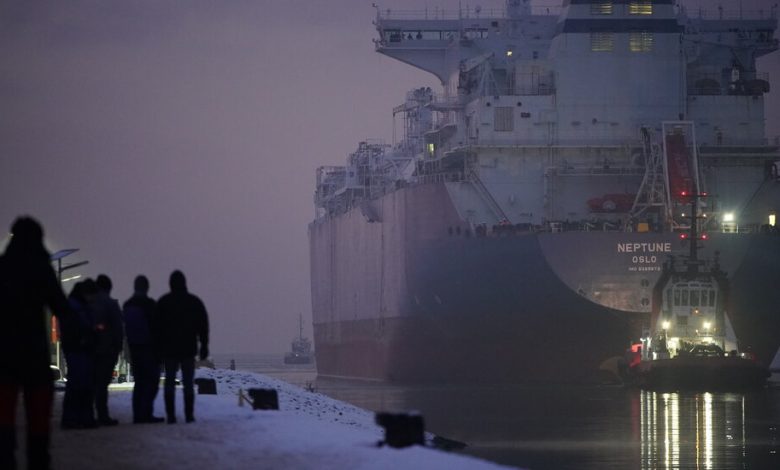Nations Aim to Zero Out Shipping Emissions by Midcentury

Negotiators from nearly every country reached a provisional agreement on Thursday to effectively eliminate the shipping industry’s greenhouse gas emissions by as close to 2050 as possible.
The breakthrough was made at an annual meeting in London of the International Maritime Organization, the global shipping regulator. The agreement, which will be formally signed on Friday, also sets goals for emissions reductions to be reached by 2030 and 2040.
According to delegates who were present at the talks, which were closed to reporters, the agreement’s ambitions were tempered by representatives of countries with major economic interests in oil production and maritime trade.
But a strong last-minute push from small island nations and other poorer coastal countries led to commitments from the organization that are in line with limiting global warming to 1.5 degrees Celsius. That is the threshold most climate scientists say the world must avoid crossing to avert the most catastrophic effects of climate change.
“We fought tooth and nail for these numbers,” said Carlos Fuller, Belize’s representative at the United Nations, who also negotiated on behalf of the small Caribbean nation in London. “They aren’t perfect, but they give us a shot at staying within 1.5 degrees Celsius. And that’s what we came here to do.”
The shipping industry accounts for around 3 percent of global greenhouse gas emissions. Ships that transport fuel, ore, grain and containers full of consumer goods typically burn heavy fuel oil, which is more emissions-intensive than most other fossil fuels.
As the world’s population continues to grow and countries develop more robust trade, the global shipping industry is also set to grow. Currently, roughly 90 percent of international trade happens on ships.
Transitioning away from that fuel will require governments, as well as oil and gas companies, to invest in zero-emissions alternatives. Those could include green hydrogen or its derivative, green ammonia. Such fuels are produced using renewable electricity such as wind and solar power to drive processes that convert water into fuel.
That transition isn’t as simple as just subsidizing more hydrogen production. New ships, new tankers, new pipelines and even new port infrastructure will be necessary to facilitate its use.
Ship makers have already started delivering vessels that can run on liquefied natural gas, which is still a fossil fuel but nevertheless cleaner than heavy fuel oil. While those new ships outsold oil-dependent ones last year for the first time, ships generally remain in use at least 25 years, meaning the vast majority of the world’s 60,000-odd cargo ships are heavy polluters.
The I.M.O. agreement isn’t binding, and is meant more as a signal to governments of where they should benchmark their own targets. It stipulates that by 2030, governments should require shipping companies to reduce greenhouse gas emissions by “at least 20 percent” as compared to 2008. By 2040, that increases to “at least 70 percent.”
A so-called net-zero target, at which point the industry would have mostly eliminated its emissions and offset the remaining amount, is meant to be achieved “by or around, i.e. close to, 2050.”
Pacific island nations in particular had fought for a more definitive target of 2050 specifically. While many of them rely heavily on shipping for tax revenue, they have also suffered disproportionately the effects of climate change driven sea-level rise and supercharged cyclones. Negotiators described their strategy as “high risk, high reward.”
“This important step would not have been possible without unwavering Pacific leadership,” said Albon Ishoda, the Marshall Islands’ negotiator at the talks, “as well as profound solidarity from countries all over the world in recognizing our vulnerability and heeding our call.”




